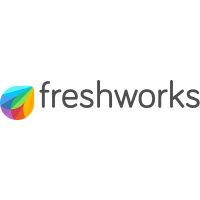
Freshworks
View Brand PublisherFrom sales to support, how BYJU'S and Freshworks boosted customer experience across teams
The COVID-19 pandemic was a game-changer for many companies as it pushed them to explore new ways to stay agile and productive, amidst new challenges. For many businesses that meant jumping on the digital transformation bandwagon to innovate at scale.
But when it came to customer experience, it took a comprehensive action plan involving all teams, right from sales to support, to ensure that companies were able to satisfy the customer and retain them.
In an interesting fireside chat hosted by YourStory as part of ’ RE:SOLVE summit, Mohnish Jaiswal, Vice President - Operations at and Anand Venkatraman, Vice President & General Manager at Freshworks about how the pandemic has led customer-facing teams like sales and customer support to collaborate more seamlessly, despite working remotely.
Customer expectations, multi-channel interactions led to surge in customer support volumes
Anand said that his team observed that the uptick in the customer support volumes was due to factors that had set in even before the pandemic, like the expectations customers had from brands. Volume was also impacted by the presence of multiple channels like social media platforms to interact with the brands. These factors magnified significantly after the pandemic hit.
“The companies that were able to shift this surge in volume between multiple channels including social media and set up an ecosystem of self-service solutions, while leveraging automation as a tool for customer engagement, were the ones who were able to tide over the crisis well,” he explained.
How customer support can be key to retain users
Talking about Byju's philosophy on user retention, Mohnish said that when the pandemic struck his team realised early on they would have to interact with students very fast and made student support a strategic focal point. What helped this along was a dynamic workforce which helped them scale, despite working remotely.
"We launched several initiatives for the student community during the crisis. Starting April 2020, we made our platform accessible to all students for free. And, the numbers shot up quickly. In just a month's time, our app downloads doubled. The app engagement numbers touched 100 minutes per day," he added.
The observations also led Byju's to acknowledge the lack of interactive learning solutions. They went on to launch live classes with unrestricted access. The content was available in multiple languages. "Moreover, we launched content in social sciences and partnered with NGOs to ensure that education reached even the underprivileged," adds Mohnish.
Citing industry reports to demonstrate how customer support could boost a brand’s growth, Anand said that he found that 42 percent of customers were ready to pay more for a better experience or service, and over 72 percent of them chose one brand over another if they received special treatment.
“According to a Gartner survey, 89 percent of companies globally continue to compete most heavily on customer engagement. Given how every product or service is available with a click, the cost of bad service is very high,” he noted.
The advantage of being a digital-native brand in a crisis
Anand went on to explain how digital-native companies collect data about their customer interactions at every step and use these insights to improve their service. He said these insights help in making it easier for the customer to interact and transact. “For instance, these brands leverage actionable insights to launch self-service solutions and help out users in case they get stuck anywhere on their interface,” he added,
“If you have a toolkit that can bring all journeys and interactions of a customer as a unified view, it can become an extremely powerful measure. Such data-driven insights give digital-native brands an upper hand over traditional businesses, despite the latter's extensive domain knowledge.”
Successful collaborations between customer-facing teams pandemic
The panellists concurred that good customer support proved to be a key differentiator for competing brands and helped many businesses win over their customers despite a taxing business environment.
Talking about how customer support isn't a one-man job, Anand said that all teams including product, engineering, sales and support have to work together and in tandem for a successful customer-centric business.
While achieving this is easier when you're working closely in a physical setting, what happens when the workplace goes remote? Anand said that solution was to ensure all customer interactions are collated and compiled into a unified customer view. “This can be the nirvana of growth. Brands should assess customer satisfaction, past interactions, gauge their profiles and offer a personalised experience.”
He also stressed on how artificial intelligence/machine learning capabilities can be instrumental in distilling the information and helping brands understand the customer better with chatbots.
"These tools can also be helpful in bringing even new customer support agents up to speed by giving them an idea into what customers need and how they should interact with them," Anand reasoned.
Why choosing the right customer service platform matters
Anand said that choosing optimal customer service tools can be useful in driving user retention and customer engagement in the long term. Quoting industry surveys to support his observation, he said that brands find it five times more expensive to acquire a new customer. "If you reach out to an existing customer for crossselling, 60 percent of them are likely to buy a new product. At the same time, 30 percent of your customers are likely to opt for products that are larger in value," he added.
Anand said that the right customer platform aids businesses in solving queries faster and more accurately. At a time when a response time of over 5 minutes might be a delay, brands can no longer afford to engage customers over 30-40 minutes over the phone.
The feat would require customer support teams to collaborate efficiently and build a unified view of past interactions and user journeys. "As all teams collaborate, brands can support them with AI-enabled tools to suggest the right kind of responses," he said.
The fireside chat was a part of Freshworks’ RE:SOLVE, a summit for digital-first CX featuring 10 leading global brands, powerful discussion and insightful workshops on how businesses can unlock growth with technology-driven customer experience strategies.







